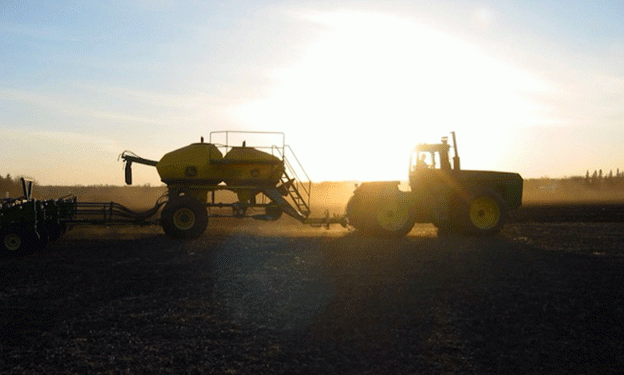Overview
Canadian farmers are expected to increase wheat and coarse grain acreage in 2025 while scaling back oilseeds such as canola and soybeans. Agriculture and Agri-Food Canada (AAFC) recently released its first supply and demand projections for the 2025/26 marketing year, revealing a strategic shift in crop choices driven by market conditions and evolving demand.
Wheat Takes the Spotlight
Wheat acreage, including durum, is forecast to rise by 2% in 2025 to 27.25 million acres. With trendline yields, production could reach 35.025 million tonnes, up from 34.958 million tonnes in 2024/25. The increase reflects strong export demand, with projected shipments at 25.9 million tonnes for the 2025/26 season.
Durum wheat production, however, is forecast to drop to 5.152 million tonnes, marking a decline due to reduced seeding in prior years and shifting demand patterns.
Coarse Grains on the Rise
Barley, oats, and corn are also poised for growth:
- Barley: Projected acreage up 5% to 6.67 million acres; production to rise to 8.6 million tonnes.
- Oats: Plantings forecast to increase by 6.5% to 3.09 million acres; production estimated at 3.51 million tonnes.
- Corn: Acreage expected to grow 3% to 3.76 million acres, with production remaining steady at 15.1 million tonnes.
Canola and Soybeans Decline
In contrast, canola and soybean acreage are expected to shrink:
- Canola: Acreage projected to fall by roughly one million acres to 21.00 million acres, with production down 2% to 17.5 million tonnes. Ending stocks are forecast to tighten to 950,000 tonnes, a significant drop from 2.748 million tonnes in 2023/24.
- Soybeans: Acreage is forecast to drop by 7% to 5.31 million acres, with production declining to 6.9 million tonnes.
Pulse and Special Crops Shift
Pulse and special crop areas are projected to decrease by 2%, but specific segments show mixed trends:
- Growth: Dry peas (3.05 million tonnes), lentils (2.385 million tonnes), and sunflower seed are expected to see increased planting.
- Decline: Chickpeas, dry beans, mustard, and canary seed will see reduced acreage, reflecting lower demand and market pressures.
Market Implications
These shifts in crop production align with market trends and global trade dynamics:
- Wheat and coarse grains are positioned to meet growing export demand, particularly from regions facing crop shortfalls.
- Reduced canola and soybean production could tighten global oilseed supplies, potentially impacting prices and export competition.
- The increase in pulse crops like lentils and peas reflects rising consumer interest in plant-based proteins and sustainable farming practices.
Canada’s 2025 crop outlook underscores the adaptability of its agricultural sector. By prioritizing wheat and coarse grains while scaling back on oilseeds, Canadian farmers are positioning themselves to meet market demands and navigate production challenges. For farmers, agronomists, and agricultural engineers, this pivot highlights the importance of market foresight, crop diversification, and strategic planning in a dynamic agricultural landscape.
Error





